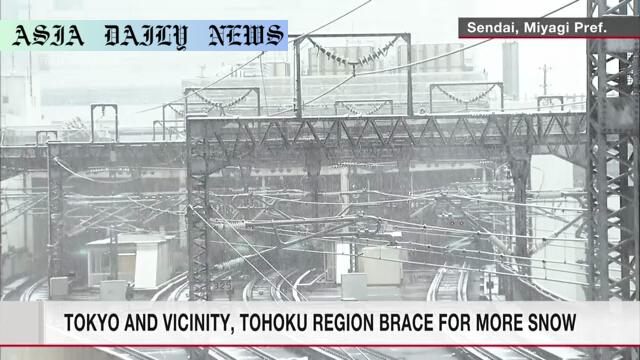Heavy snow likely in Japan as rain front and cold air mass hit northern regions.
Key Point 1: Heavy snow is forecasted in Japan’s Kanto-Koshin and Tohoku regions.
Key Point 2: Central Tokyo observed one centimeter of snow, with heavier snowfall in northern areas.
Key Point 3: Weather officials warn of potential traffic disruptions due to icy roads and heavy snow.
Key Point 4: Expressways and highways were temporarily closed as a precaution.

Significant Snowfall Forecast for Northern Japan
Japanese weather officials are predicting heavy snowfall, particularly in the mountainous areas of the Kanto-Koshin and Tohoku regions. According to the Japan Meteorological Agency, the combination of a rain front and cold air mass has already brought significant snow to these areas, with additional snowfall expected until Thursday. The regions have seen varying levels of snowfall, such as six centimeters in Morioka City, Iwate Prefecture, and smaller accumulations in towns like Minakami and Miyako.
Implications of Snowfall on Roadways and Transport
Heavy snow is not limited to northern areas. Central Tokyo, for instance, observed one centimeter of snow on Tuesday night. This widespread weather pattern has already led to disruptions, including the temporary closure of major expressways like Tomei and national highways. Though these were reopened, the possibility of further closures looms as weather conditions continue to intensify. Weather authorities are urging residents to remain cautious, particularly regarding icy roads, which could compound traffic hazards.
Precautionary Measures and Ongoing Updates
Considering the possibility of worsening conditions, officials recommend regular monitoring of weather updates. Residents in affected areas should plan their commutes carefully and avoid unnecessary travel. Emergency services stand ready to address road and safety concerns. The Japan Meteorological Agency’s warnings highlight the importance of preparedness in the face of potential natural disruptions. Efforts by authorities to preemptively close roads and highways have been critical in averting accidents and ensuring public safety.
Climate Impacts and Future Concerns
This severe weather event underscores broader discussions regarding climate variability in Japan. With winters becoming increasingly unpredictable, precise forecasting and swift responses to adverse conditions remain essential. Events like these also invite reflection on Japan’s resilience infrastructure, focusing on adapting to abrupt changes in climate patterns. Heavy snowfall, though common in northern Japan, has seen fluctuations that pose unique challenges to infrastructure, transport, and daily activities.



Commentary
Reflecting on the Impacts of Significant Snowfall
Japan’s forecast of heavy snowfall in the northern regions highlights both the beauty and challenges of winter weather. For some, snow conjures idyllic imagery of serene landscapes; for others, it signals disruptions to daily life. The current predictions by the Japan Meteorological Agency serve as a reminder of how intertwined our lives are with nature’s rhythms. The accumulation of snow affecting major cities and rural areas alike brings a shared experience but also unique difficulties depending on geography and context.
Safety Precautions Demand Attention
Safety continues to be a primary concern during events like these. Road closures and traffic disruptions emphasize the volatility of traveling during such weather. Emergency responses and the readiness of local authorities are often tested during these periods. Interestingly, weather events like this not only challenge physical infrastructure but also test community resilience. Encouraging prudence, such as limiting unnecessary travel and staying informed on weather updates, becomes crucial in mitigating risks.
A Broader Perspective on Climatic Variance
While heavy snowfall is not uncommon in Japan, the overall global narrative around increasing climate anomalies cannot be ignored. Events such as these might feel routine for those in snow-prone areas, yet they also reflect deeper patterns in the Earth’s climate systems. Governments, scientists, and local communities must work collectively to understand these shifts, ensuring preparedness and adaptability for future events.
Ultimately, while snow can be a beautiful symbol of winter, its impact on transportation, safety, and daily life serves as a stark reminder of nature’s power. Fostering awareness and promoting caution are key in ensuring that such events are navigated as safely and smoothly as possible.